There is one number eight in the starting fifteen players on a rugby team. The position is named because the players wear the number 8 jersey.
This article describes their important role in open play, scrums, and lineouts.
What Does The Number 8 Do In Open Play?
Let’s start with what the number eight does when the ball is in open play.
Ball carriers
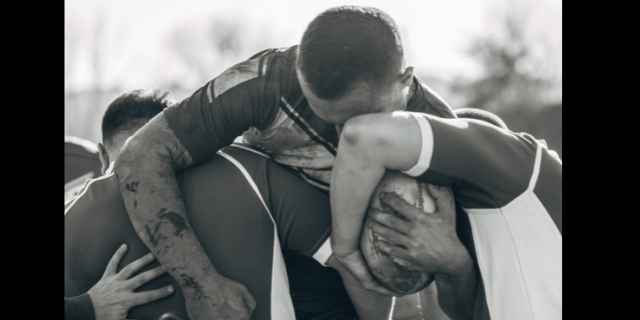
Eights are expected to carry the ball hard toward opposition defenders in open play. As they anticipate contact, they lower their body position and charge forward.
They should be strong enough to take two tacklers to get them to the ground.
Eights will seek out opposition backs and other smaller defenders in order to burst through the tackle.
Coaches also devise plays that bring the number eight into play on a second or third phase that has tied in opposition defenders. A clever pass can send the eight charging through a gap.
When this type of play is close to the opposition try line, the goal is to have the defenders trying to tackle a big player from the side.
Often, the eight’s strength can steal an extra yard to get the ball over the line.
Pick and go
This also applies to a “pick-and-go” close to the line. This is where the ruck is near the try line and a forward tries to barge through defenders to touch down at short range.
We analyzed the number of tries scored by position in the 2019 World Cup. Number eights scored more than locks, props, and the blindside flanker.
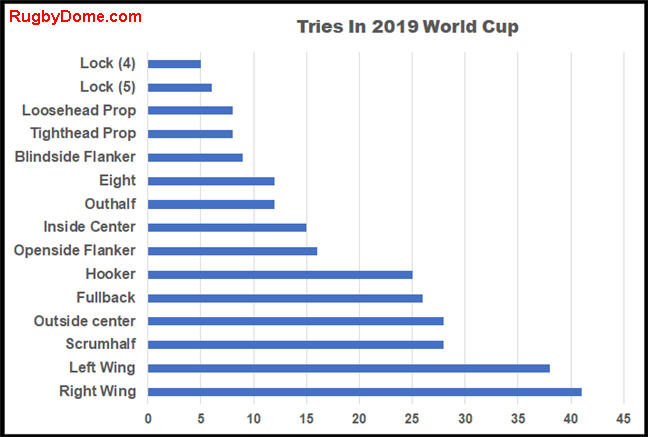
Protecting and competing at rucks
When a nearby teammate is tackled, the attacking team’s eight will ruck over the ball in order to protect possession.
The defending team’s eight will compete hard for the ball at nearby rucks. Often, they are working in tandem with a flanker to disrupt the ruck, steal the ball, or eke out a penalty.
If you’re not sure about the breakdown, check out our beginner article on rucking in rugby.
Tackling
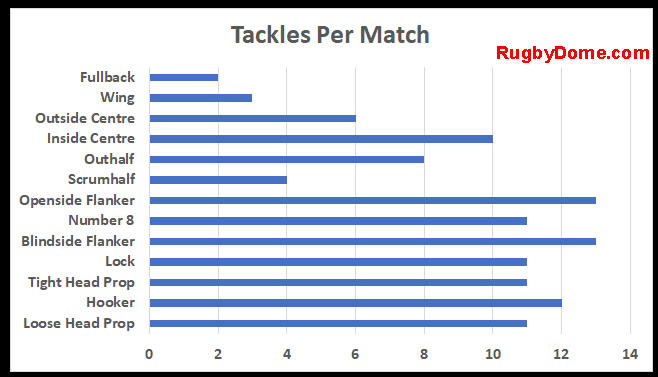
As you can see from the chart above, eights aren’t the highest tackling forwards. That title falls to the flankers.
(You’ll find more details in our article on how many tackles each rugby position makes).
However, eights make a significant number of tackles throughout the match. Professionals make an average of about eleven tackles per match.
Because of their size, eights are expected to make dominant tackles when opposition forwards approach them head on.
The eight will look to hold up the player while other defenders target the ball or push the ball-carrier backward.
What Does The Number Eight Do In The Scrum?
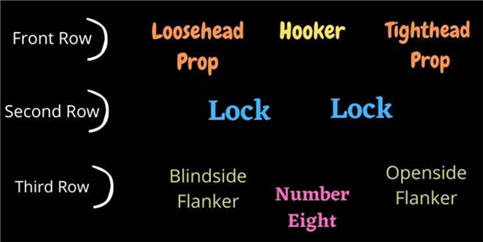
The number eight is in the third row of the scrum with a flanker on either side.
Collectively, the eight and the flankers are known as backrowers or the back row. We have a separate article on the role of flankers.
The number eight has a key role for the completion of the scrum.
When the scrumhalf rolls the ball into the tunnel between the opposition front rows, the hooker must control and tap the ball backwards.
Controlling the ball at the back of the scrum
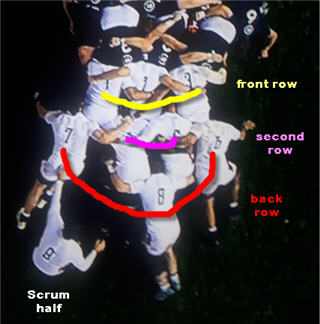
The number eight must collect and control the rolling ball with his foot. This is done while the opposition pack are pushing and heaving with all their might.
The moment the ball leaves the feet of the eight and comes out of the scrum, the referee deems the scrum to be over. The opposition scrumhalf and flankers can compete for the ball or tackle the ball-carrier.
This is why its vital for the number eight to control the ball and execute the planned play off the scrum.
There are several options for the attacking team.
The scrumhalf may initiate the attack by picking up the ball from beneath the number eight’s feet.
The play may also start by the eight reaching down with a hand to flick up the ball to the scrumhalf. This allows the number nine to stand a little further back. This gives more attacking options.
However, the number eight may also be the key to the attack.
Pick and go from the scrum
The number eight may choose to pick up the ball and charge forward to attack the defensive line.
The eight will try to evade the opposition flanker who should be watching out for this attack. The best outcome is if the eight can force a back to make the tackle.
This means the opposition forwards have to turn and move backward to help their backline.
It’s true that this play has become less common in professional rugby. This is because the flankers and even the scrumhalf have become so effective at tackling.
It becomes a disadvantage if the number eight is tackled without gaining any ground.
Number 8s In The Lineout
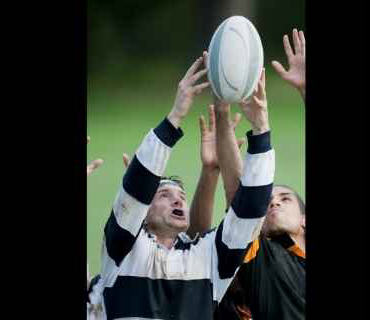
The role of a number eight in the lineout greatly depends on their size and athleticism.
Heavier athletes are less likely to jump or be lifted to catch the ball. Instead, they make take the lifter role.
This means that they crouch and lift the jumper to peak height.
Another role for the bigger eight is to stay out of the lineout and play a part after the lineout has completed. With opposition forwards tied up in the line, the eight can receive a pass and charge at the defensive line.
Do number eights not jump in the lineout?
There are plenty of athletic number eights with a good leap. These eights tend to be positioned toward the back of the lineout to provide the option of a longer throw.
However, eights in elite professional rugby are getting so heavy that they are less likely to jump.
We reviewed all lineouts in the first round of the 2021 Six Nations. Only four percent of lineouts were caught by an eight.
For context, here’s a graph that shows how the eight compares to other positions. The numbers at the bottom of the graph are the numbers on player jerseys.
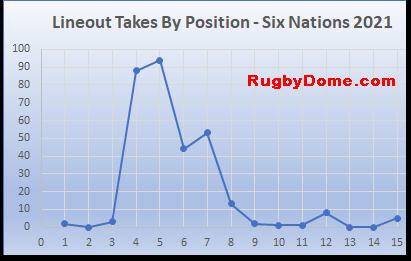
Not surprisingly, the locks take the majority of catches. If you want a more detailed explanation (and the raw numbers), check out our article on who is lifted in the lineout.
Other Positions
Our general overview of rugby positions has links to in-depth articles for each playing position.
Greats Of The Game
Check out our picks for the greatest number eights in rugby. Do you agree with our choices?